
# 3185j - 1998 32c Celebrate the Century - 1930s: Jesse Owens
32¢ Jesse Owens
Celebrate the Century – 1930s
City: Cleveland, OH
Quantity: 12,533,000
Printed By: Ashton–Potter (USA) Ltd
Printing Method: Lithographed, engraved
Perforations: 11.5
Color: Multicolored
Birth Of Superstar Athlete Jesse Owens
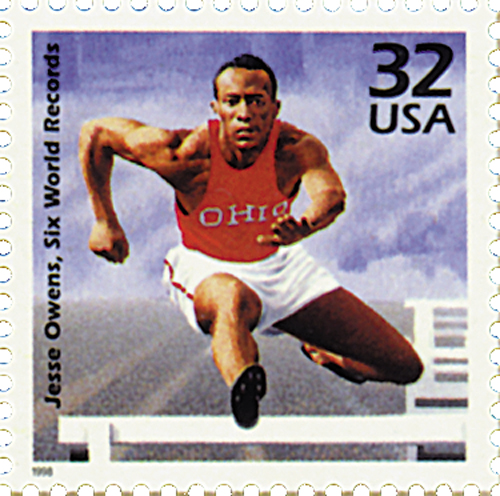
Born on September 12, 1913, Jesse Owens broke several track and field records and won four Olympic gold medals. He was ranked as the greatest athlete in the history of his sport.
The youngest of ten children, Owens spent his childhood in Alabama and then Ohio. He took on various jobs as a child to help out the family, including delivering groceries, loading freight cars, and working in a shoe repair store. He discovered his passion for running at an early age, which eventually earned him national attention in high school when he tied the world record for the 100-yard dash.
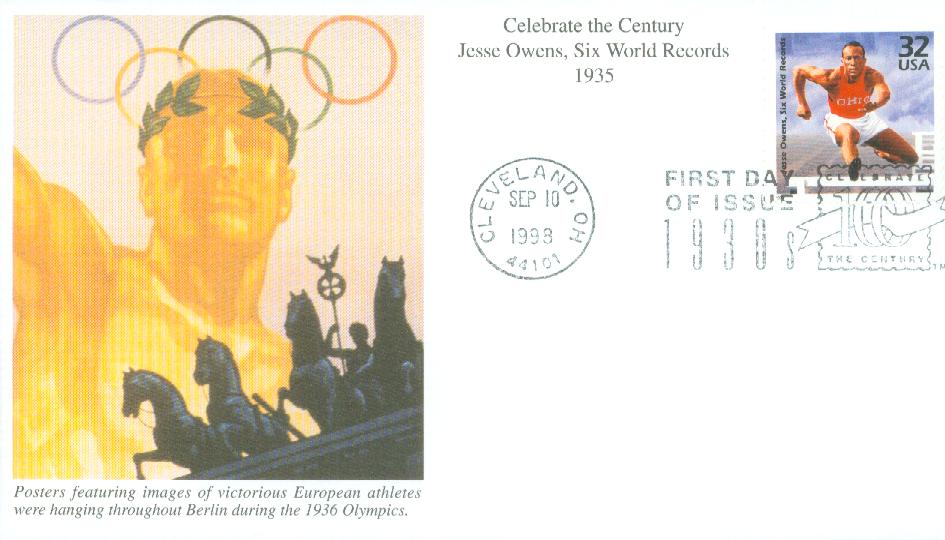
Owens’ star continued to shine in college. Attending Ohio State University, he became known as the “Buckeye Bullet.” Owens won a record eight individual NCAA championships. Then, on May 25, 1935, at the Big Ten Track Meet, he set three world records (long jump, 220-yard sprint, and 220-yard low hurdles) and tied a fourth (100-yard dash) in the course of just 45 minutes. It’s been called “the greatest 45 minutes ever in sport.”
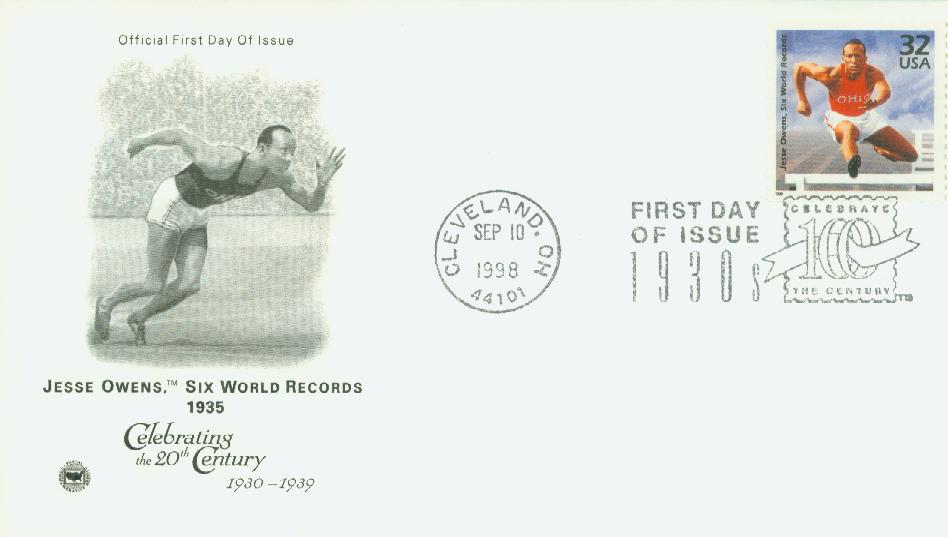
The following year Owens competed in the Berlin Olympics in Germany. Nazi dictator Adolph Hitler had planned to use the games as a display of German power and superiority. Hitler believed that Germans were the master race, and that European athletes were superior to any in the world, especially to minority athletes. Posters portraying this idea were hanging all over Berlin.
A German won the first event of the games, the shot put. Hitler met with this man to publicly congratulate him. But then Owens won the broad jump, and broke the world and Olympic records in the 200-meter dash. His appearance at the Olympics was completed the next day, when he was a member of the record-breaking 400-meter relay team. In all, Owens won four gold medals at those games, making him the most successful athlete of the competition credited with obliterating Hitler’s claims of Aryan superiority.
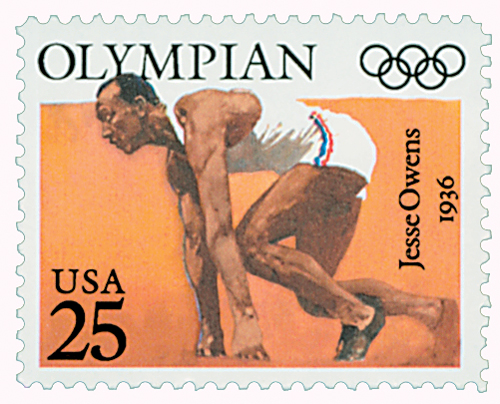
For many years, it was stated that Hitler only shook the hands of German victors at the games, some claiming he intentionally snubbed Owens. However, in later years Owens revealed he had a photograph of himself shaking hands with Hitler behind the honor stand, which is why international press didn’t capture it. Owens claimed it was “one of my most beautiful moments.” Though some back up his story, it’s unknown where the photo is today.
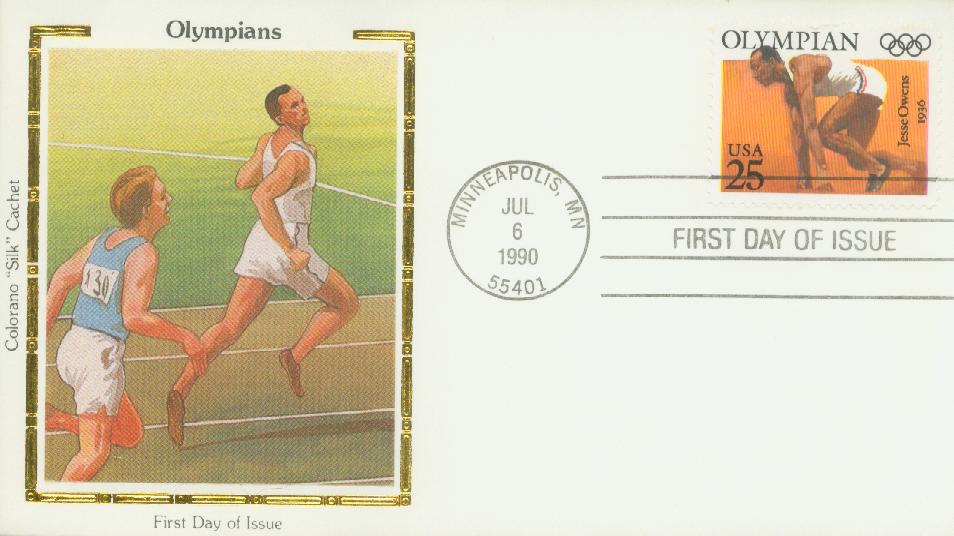
When he returned to America, President Franklin Roosevelt didn’t invite Owens to the White House. Owens went on to support Roosevelt’s opponent, Alf Landon, in the 1936 presidential race. At a speech that year, he stated, “Hitler didn’t snub me – it was our president who snubbed me. The president didn’t even send me a telegram.”
After the Olympics, Owens and the rest of the Olympic team were invited to compete in Switzerland. Owens declined, opting to return to the U.S. to take advantage of commercial offers he’d received. However, this upset American athletic officials who withdrew his amateur status, ending his career.
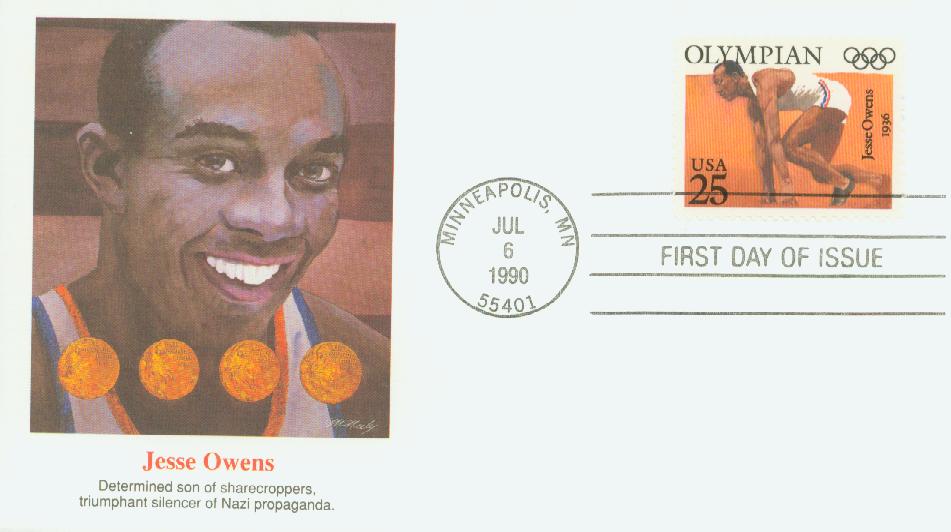
Owens was unable to formally compete for the rest of his life, though he remained connected to sports. He helped form the West Coast Baseball Association (WCBA) and was vice president of one of the teams. He toured with the team and entertained audiences between doubleheaders by racing against horses. He went on to try out other business ventures and was later a U.S. goodwill ambassador. Owens died on March 31, 1980.
Click here to watch a neat video about Owens’ accomplishments at the 1936 Olympics.
32¢ Jesse Owens
Celebrate the Century – 1930s
City: Cleveland, OH
Quantity: 12,533,000
Printed By: Ashton–Potter (USA) Ltd
Printing Method: Lithographed, engraved
Perforations: 11.5
Color: Multicolored
Birth Of Superstar Athlete Jesse Owens

Born on September 12, 1913, Jesse Owens broke several track and field records and won four Olympic gold medals. He was ranked as the greatest athlete in the history of his sport.
The youngest of ten children, Owens spent his childhood in Alabama and then Ohio. He took on various jobs as a child to help out the family, including delivering groceries, loading freight cars, and working in a shoe repair store. He discovered his passion for running at an early age, which eventually earned him national attention in high school when he tied the world record for the 100-yard dash.

Owens’ star continued to shine in college. Attending Ohio State University, he became known as the “Buckeye Bullet.” Owens won a record eight individual NCAA championships. Then, on May 25, 1935, at the Big Ten Track Meet, he set three world records (long jump, 220-yard sprint, and 220-yard low hurdles) and tied a fourth (100-yard dash) in the course of just 45 minutes. It’s been called “the greatest 45 minutes ever in sport.”

The following year Owens competed in the Berlin Olympics in Germany. Nazi dictator Adolph Hitler had planned to use the games as a display of German power and superiority. Hitler believed that Germans were the master race, and that European athletes were superior to any in the world, especially to minority athletes. Posters portraying this idea were hanging all over Berlin.
A German won the first event of the games, the shot put. Hitler met with this man to publicly congratulate him. But then Owens won the broad jump, and broke the world and Olympic records in the 200-meter dash. His appearance at the Olympics was completed the next day, when he was a member of the record-breaking 400-meter relay team. In all, Owens won four gold medals at those games, making him the most successful athlete of the competition credited with obliterating Hitler’s claims of Aryan superiority.

For many years, it was stated that Hitler only shook the hands of German victors at the games, some claiming he intentionally snubbed Owens. However, in later years Owens revealed he had a photograph of himself shaking hands with Hitler behind the honor stand, which is why international press didn’t capture it. Owens claimed it was “one of my most beautiful moments.” Though some back up his story, it’s unknown where the photo is today.

When he returned to America, President Franklin Roosevelt didn’t invite Owens to the White House. Owens went on to support Roosevelt’s opponent, Alf Landon, in the 1936 presidential race. At a speech that year, he stated, “Hitler didn’t snub me – it was our president who snubbed me. The president didn’t even send me a telegram.”
After the Olympics, Owens and the rest of the Olympic team were invited to compete in Switzerland. Owens declined, opting to return to the U.S. to take advantage of commercial offers he’d received. However, this upset American athletic officials who withdrew his amateur status, ending his career.

Owens was unable to formally compete for the rest of his life, though he remained connected to sports. He helped form the West Coast Baseball Association (WCBA) and was vice president of one of the teams. He toured with the team and entertained audiences between doubleheaders by racing against horses. He went on to try out other business ventures and was later a U.S. goodwill ambassador. Owens died on March 31, 1980.
Click here to watch a neat video about Owens’ accomplishments at the 1936 Olympics.









